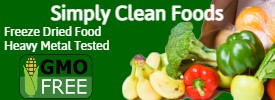By David Kelly
Article Source
Under the guise of honoring Canadian farmers as good stewards of the land, the government of Canada has implemented a plan to reduce 30% of its fertilizer use by 2030 in order to meet climate targets. Ultimately the goal is to have net-zero greenhouse gas (GHG) emissions by 2050. The plan will effectively cap the fertilizer usage of farmers.
This is expected to engender catastrophic financial losses for those reliant on farming for income, as well as potential food shortages. The Saskatchewan and Alberta ministers of agriculture have expressed their “profound disappointment” in the Canadian federal government’s “arbitrary goal.”
“This has been the most expensive crop anyone has put in, following a very difficult year on the prairies,” said Nate Horner, Alberta’s minister of agriculture.
“The world is looking for Canada to increase production and be a solution to global food shortages. The federal government needs to display that they understand this. They owe it to our producers,” he added.
Industry association Fertilizer Canada called the government’s approach “short-sighted,” arguing that reducing nitrogen fertilizer use “will have considerable impact on Canadian farmers’ incomes and reduce overall Canadian exports and GDP.”
A report compiled by accounting firm Meyers Norris Penny suggested that regulated fertilizer reduction could cost Canadian farmers $48 billion by 2030 and reduce crop sizes.
Fertilizer Canada claimed, “It is estimated that a 30% absolute emission reduction for a farmer with 1,000 acres of canola and 1,000 acres of wheat, stands to have their profit reduced by approximately CND$38,000 – CND$40,500 (US$29.523 to US$31.465) annually.”
This represents a loss of $400 million (Canadian; $310 million U.S.) for wheat farmers, and $396 to $441 million (Canadian; $308 to $343 million U.S.) for canola farmers.
Fertilizer Canada also suggested focusing on reducing emissions per bushel and not using a total cap. Otherwise, they warn, yield crop productivity will fall below 2020 levels.
Less food production might lead Canada to depend on food imports from countries relying on less-sustainable agriculture practices. “We cannot feed the growing world population with a reduction in fertilizer,” say the governments of Saskatchewan and Alberta.
The UN warned earlier this year that global food production in 2023 may not be able to meet rising demand without proper fertilizer use.
The Canadian government ignored the potential of worldwide food shortages by staying focused on GHG output with the reduction of fertilizer use. “We are continuing to support the development and adoption of practices and equipment that reduce GHG emissions and improve the sector’s climate change resiliency. With the experience of fertilizer industry representatives, farmers and other pertinent groups, we can work together to identify concrete and innovative steps to help meet our targets,” said Marie-Claude Bibeau, minister of agriculture and agri-food.
Eastern Canadian farmers are the most impacted by the planned reduction of nitrogen use, as approximately 660,000 to 680,000 metric tons of nitrogen fertilizer are imported from Russia to the region annually. That represents 85% to 90% of the total nitrogen fertilizer used in the area.
A 35% tariff on Russian products — including fertilizers — was put in place in Canada in March after the Russian invasion of Ukraine, not giving farmers any time to search for alternative sources. However, the U.S. International Trade Commission rejected a 132.6% duty on Russian fertilizers, a huge relief for domestic producers who want to keep prices at manageable levels.
Canadian Prime Minister Justin Trudeau is pushing to implement this plan even after weeks of protests in the Netherlands that should have proved to him that the world is not ready to adopt these draconian measures. Netherlands lawmakers voted to cut down on pollution emissions, primarily nitrogen oxide and ammonia, by 50 percent across the country by 2030. Tens of thousands of farmers have gathered across the Netherlands in recent weeks to protest their government’s plan to reduce nitrous oxide emissions, arguing it would have disastrous consequences for their business, and eventually, consumers.
Dutch farmers block borders between Germany and Holland to protest nitrogen cuts.pic.twitter.com/yc102P3v5O
— The Post Millennial (@TPostMillennial) June 30, 2022
Western Canadian Wheat Growers Association, a farm advocacy organization, accused Trudeau’s administration of reaching a decision on fertilizer without seeking their input. “The target of an absolute reduction in nutrients used to produce our food was done without consultation with the fertilizer industry or Canadian grain and oilseed farmers,” they said in a statement.
Saskatchewan’s minister of agriculture, David Marit, said, “We’re really concerned with this arbitrary goal. The Trudeau government has apparently moved on from their attack on the oil and gas industry and set their sights on Saskatchewan farmers.”
It appears that Trudeau, President Joe Biden, and a number of other world leaders are intent on stopping the inexorable change of Earth’s climate by imposing edicts on vital industries, namely gas, oil, and now fertilizer. But at what cost? And who pays?








